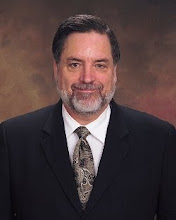The Problem of RNA
In my last post, I explained the reasons proteins are the most important molecules in our bodies for sustaining life. Proteins are produced by cells. To produce proteins, each cell contains a chemical factory that transcribes blueprints stored as genetic sequences into a coded message, transports the message outside the nucleus for processing and translates the message into proteins.
While it's not completely understood, each cell type (skeletal, brain, skin, etc.) knows when and where in the DNA to begin transcribing a particular gene sequence. Each gene sequence contains a region called the Promoter that indicates where to start transcribing the gene sequence and a Terminator which indicates where to stop.
The transcription process results in a single strand of base nucleotides called Ribonucleic Acid or RNA. Just as DNA contains an alphabet of four base nucleotides: A, T, C, G, RNA also contains an alphabet that represents it four base nucleotides: A, U, C, G. To construct a word in the RNA language, three of these letters are grouped together to form a codon, for example: ACG. The letters need not be unique, so UUU is also a valid codon.
The difference between DNA and RNA is that the nucleotide uracil in RNA replaces thymine in DNA.
non-template strand:
template strand: GACGGTAACAGTCTGTACATATAT
An enzyme called RNA polymerase reads the two DNA strands to produce the RNA message chain which is the complement of the DNA template strand. Notice that since the DNA template stand and the non-template strand are also complementary, it follows that that the RNA message is a copy of the original, non-template strand (with uracil replacing thymine).
non-template strand:
template strand: GACGGTAACAGTCTGTACATAT (complement of non-template strand)
RNA produced:
Once the RNA is produced, it is transported out of the nucleus into the cytoplasm so the process of protein construction can begin. During construction the codons in the RNA message are read by a chemical bar code reader called the ribosome. The ribosome maps, or translates, the RNA codons to amino acids and connects them into a polypeptide chain which will later be folded into a protein. The amino acids are brought to the ribosome by transfer RNA (tRNA) molecules.
The process of producing proteins from RNA is called Translation.
While my description is overly simplified, in actuality, the transcription of DNA into RNA, the transportation of RNA out of the cell's nucelus and into the cytoplasm and the translation of the RNA message is very complex. Failure of any component or step will likely result in harmful results. If the DNA codons are incorrectly translated or transcripted, the resulting protein will not function in the way it should. Muscular Dystrophy, for example, is believed to be the result of a premature termination of RNA translation.
The challenge for science is to explain the origins of RNA in the context of pure naturalism. To their credit, most biologists and geneticists realize and accept the challenge. They firmly believe the scientific method will reveal the natural origins of RNA.
Not me. For me, it's easier to believe a super-creative Mind created and initiated the entire process. The process is too complicated and relies on too many collaborating cellular mechanisms to have occured naturally.
Opponents might ask, "Then why didn't this Super-Mind create a perfect process? Why do mistakes occur that result in diseases like Muscular Dystrophy?"
My response is that these mistakes were not originally present in the original DNA and RNA, but came about as the result of humanity's rejection of its Creator. Though our present bodies may decay and die - the consequence of rejecting the Creator - it's possible to one day possess a perfect body with perfect DNA that perfectly constructs and maintains proteins.
Today, that's not so far fetched. We are not gods but even we hope to use genetic medicine to correct nature's malfunctions and reverse aging . If we can do this, if we can understand our genome well enough to mitigate the risk of malfunctions, surely a more advanced, Super-Intelligence would, too.
Therefore, I think it is more rational to believe a Super Intelligence initiated the processes that resulted in all the cellular processes and mechanisms we observe.
For additional details, see:
DNA-RNA-Protein
From DNA to RNA
Learn Genetics
Learning Your A, G, C's (and T, too)


0 Comments:
Post a Comment
Subscribe to Post Comments [Atom]
<< Home